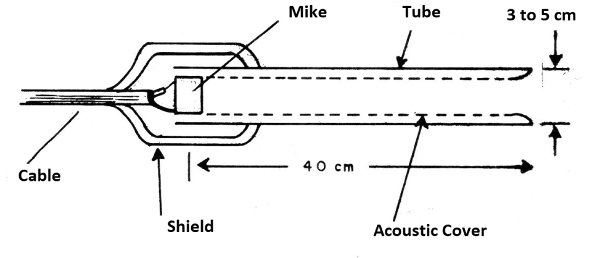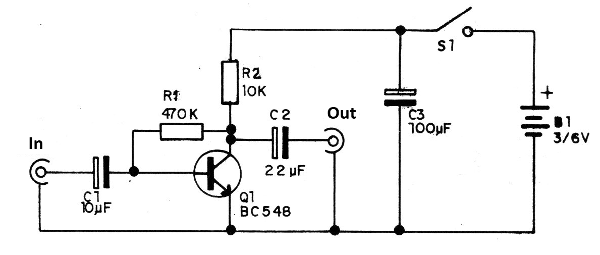This article is part of one of my spy books. A first feature greatly explored is the directional sensitive microphone. The most common type is the tubular shown in Figure 1.

The tube allows the pick up of sounds that comes from only one direction, then is hidden and pointed to the people who are talking. The side interfering sounds are not picked up.
Setting up such a microphone does not present many difficulties.
As shown in figure 2 we can use a very thick cardboard tube or metal, and inside it place some acoustic absorbent material.

The end where the sound enters must be open and at the other end is the electret microphone.
The microphone must be protected to avoid picking up the sounds behind the unit.
A shielded cable carries the signal to the amplifier or recorder. We have several devices that can be used with this type of microphone.
Preamplifier
To increase the gain of the microphone we can use a pre-amplifier transistorized with only one transistor. Note that the recorder usually already has its amplifier and electret microphones too, so excessive additional amplification can saturate the circuit causing distortion.
In figure 3 we have a preamplifier that can be used for this purpose.

SEMICONDUCTORS
Q1 - BC548 or equivalent - NPN general purpose transistor
RESISTORS
R1 - 10 k - resistor (brown, black, orange)
R2 - 470 k - resistor (yellow, violet, yellow)
CAPACITORS
C1 - 10 uF x 6 V - electrolytic capacitor
C2 - 22 uF x 6V - electrolytic capacitor
C3 - 100 uF x 6 V - electrolytic capacitor
SEVERAL
B1 - 3 or 6 V - 2 or 4 small batteries
S1 - Single switch
Printed circuit board, mounting box, battery holder, microphone connector, wires, solder, etc.




